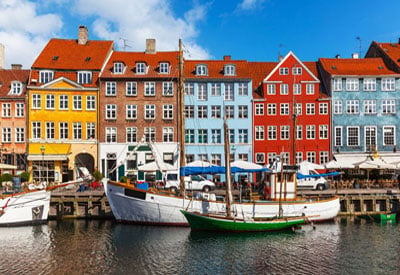Information about the Venezuelan Flag: Colors and Meaning of the Flag of Venezuela
In this Country Profile
:: Meaning of the Venezuelan Flag ::
The national flag of the Bolivarian Republic of Venezuela is very bright and colorful. It consists of three horizontal stripes, consisting of a yellow top panel, blue middle panel and red bottom panel. In the center of the blue panel are eight white stars arranged in an arc pattern. On the top canton near the hoisting side is the coat of arms of Venezuela.
Venezuela’s national flag had undergone so many changes since 1811 when it was beginning to struggle for independence from Spain. It basically follows the design of Francisco de Miranda in 1806 and adopted by the national Congress in 1811. The original design of the flag was used and flown for the first time on March 12, 1806. It was raised in Jacmel, Haiti when Francisco Miranda was preparing for his travel to liberate Venezuela. The flag was raised in Venezuela’s La Vela de Coro on August 3, 1806. For a time March 12 was celebrated as Venezuela’s Flag Day but it was changed to August 3 from 2006 onwards.
According to historical records, Miranda learned the theory of primary colors, which he used on the design of the flag from Johann Wolfgang con Goethe whom Miranda met in his travels. It was said that Goethe, a celebrated German philosopher and writer explained that yellow is the warmest color, the most noble and the closest color to white light. Blue denotes serenity and excitement at the same time, which at a distance turns into a shadow while red enlivens blue and yellow – creating the meaning that the light vanishes into the shadows. Miranda also saw the same colors used on the flag of unfurled in a painting of Christopher Columbus and the standard used by the Burgers’ Guards.
Historically the colors used on the flag of Venezuela are meant to symbolize a golden America that is separated from the blood of Spain by the blue sea. Yellow was also said to depict the wealth of the land of Venezuela, with blue representing the courage of its people and red meant independence from Spain.
Originally there were seven stars in the flag representing the union of seven colonial provinces during the War of Independence against Spain. It was a union of Mérida, Trujillo, Margarita, Barcelona, Caracas, Cumaná and Barinas. When Simón Bolivar ended the Guayana campaign, he added another star to the flag to represent the freedom of Guayana through a decree written and signed by him in Angostura on November 20, 1817. But it did not happen as Bolivar decreed.
The coat of arms was added on February 19, 1954 when the flag was officially adopted and an 8th star added to the flag to fulfill Bolivar’s decree only in 2006 as announced by Venezuelan President Hugo Chávez and approved by the government amid some opposition due to the cost of the transition and changing all the documents and things bearing the image of the old flag. The decision to add another star prevailed, though. The flag of Venezuela has a proportional ratio of 2:3.
:: References ::
http://www.absoluteastronomy.com/topics/Flag_of_Venezuela
http://www.mapsofworld.com/flags/venezuela-flag.html
http://www.worldflags101.com/v/venezuela-flag.aspx

Sorry, the comment form is closed at this time.